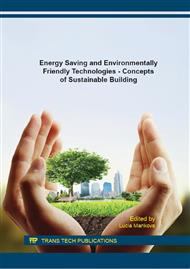p.779
p.786
p.795
p.803
p.811
p.821
p.829
p.836
p.845
Toward Visual Accessibility in the Built Environment: The ViDeA Project
Abstract:
In the last decades, the general awareness with regard to the topic of universal design (or design for all) has been steadily increasing. As a consequence, more attention is being paid to the requirements of all segments of population (specifically including those with certain perceptual and/or motoric limitations). Nonetheless, additional efforts toward improving pertinent regulations, design practices, and relevant technologies are needed. Specifically, the field of visual accessibility in the built environment has not received the same level of consideration as some other areas of universal design. Given this background, the present contribution reports on the most recent progress made in the course of the ongoing ViDeA research project. This research effort aims primarily at the development of effective means toward supporting the design and implementation of visually accessible solutions in the built environment. Thereby, a central objective is to enhance the mobility of people with sight restriction. Visually impaired people primarily orient themselves based on their residual eyesight. The optimization of lighting solutions represents a highly critical measure toward creating environmental circumstances in which the remaining eyesight can be optimally utilised. The main components of the ViDeA project are as follows: An original set of optometric experiments, the evaluation of a number of use cases and the development of a computational tool for architects and engineers in order to facilitate the evaluation of visual accessibility criteria of projects. The deliverables of the ViDeA project are expected to enhance the quality of visual performance guidelines and augment the capabilities of simulation-based design optimization tools.
Info:
Periodical:
Pages:
829-835
Citation:
Online since:
January 2016
Price:
Сopyright:
© 2016 Trans Tech Publications Ltd. All Rights Reserved
Share:
Citation:


